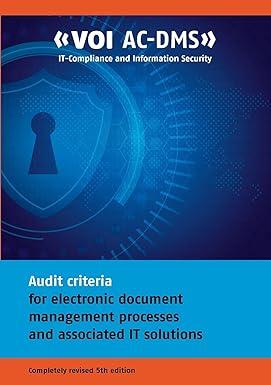Question
Inherent risk at the financial statement level relates to (a) business and operating-related risks and (b) financial reporting risks. The Professional Judgment in Context feature
Inherent risk at the financial statement level relates to (a) business and operating-related risks and (b) financial reporting risks. The Professional Judgment in Context feature Risks Asso- ciated with Financial Statement Misstatements summarizes vari- ous risks from ISA 315; that list is reproduced here. For each risk factor, categorize it as indicating (a) business and operating risk, (b) financial reporting risk, or (c) other (if other, describe).
1. Operations in regions that are economically unstable, such as countries with significant currency devaluation or highly inflationary economies 2. Operations exposed to volatile markets, such as futures trading 3. Operations that are subject to a high degree of complex regulation 4. Going concern and liquidity issues, including loss of signifi- cant customers or constraints on the availability of capital or credit 5. Offering new products or moving into new lines of business 6. Changes in the organization such as acquisitions or reorganizations 7. Entities or business segments likely to be sold 8. The existence of complex alliances and joint ventures 9. Use of off-balance sheet financing, special-purpose entities, and other complex financing arrangements 10. Significant transactions with related parties 11. Lack of personnel with appropriate accounting and financial reporting skills 12. Changes in key personnel, including departure of key executives 13. Deficiencies in internal control, especially those not addressed by management 14. Changes in the IT system or environment and inconsistencies between the entitys IT strategy and its business strategies 15. Inquiries into the entitys operations or financial results by regulatory bodies 16. Past misstatements, history of errors, or significant adjust- ments at period end 17. Significant amount of nonroutine or nonsystematic transac- tions, including intercompany transactions and large revenue transactions at period end 18. Transactions that are recorded based on managements intent, such as debt refinancing, assets to be sold, and classi- fication of marketable securities 19. Accounting measurements that involve complex processes 20. Pending litigation and contingent liabilities, such as sales warranties, financial guarantees, and environmental remediation
Step by Step Solution
There are 3 Steps involved in it
Step: 1

Get Instant Access to Expert-Tailored Solutions
See step-by-step solutions with expert insights and AI powered tools for academic success
Step: 2

Step: 3

Ace Your Homework with AI
Get the answers you need in no time with our AI-driven, step-by-step assistance
Get Started


